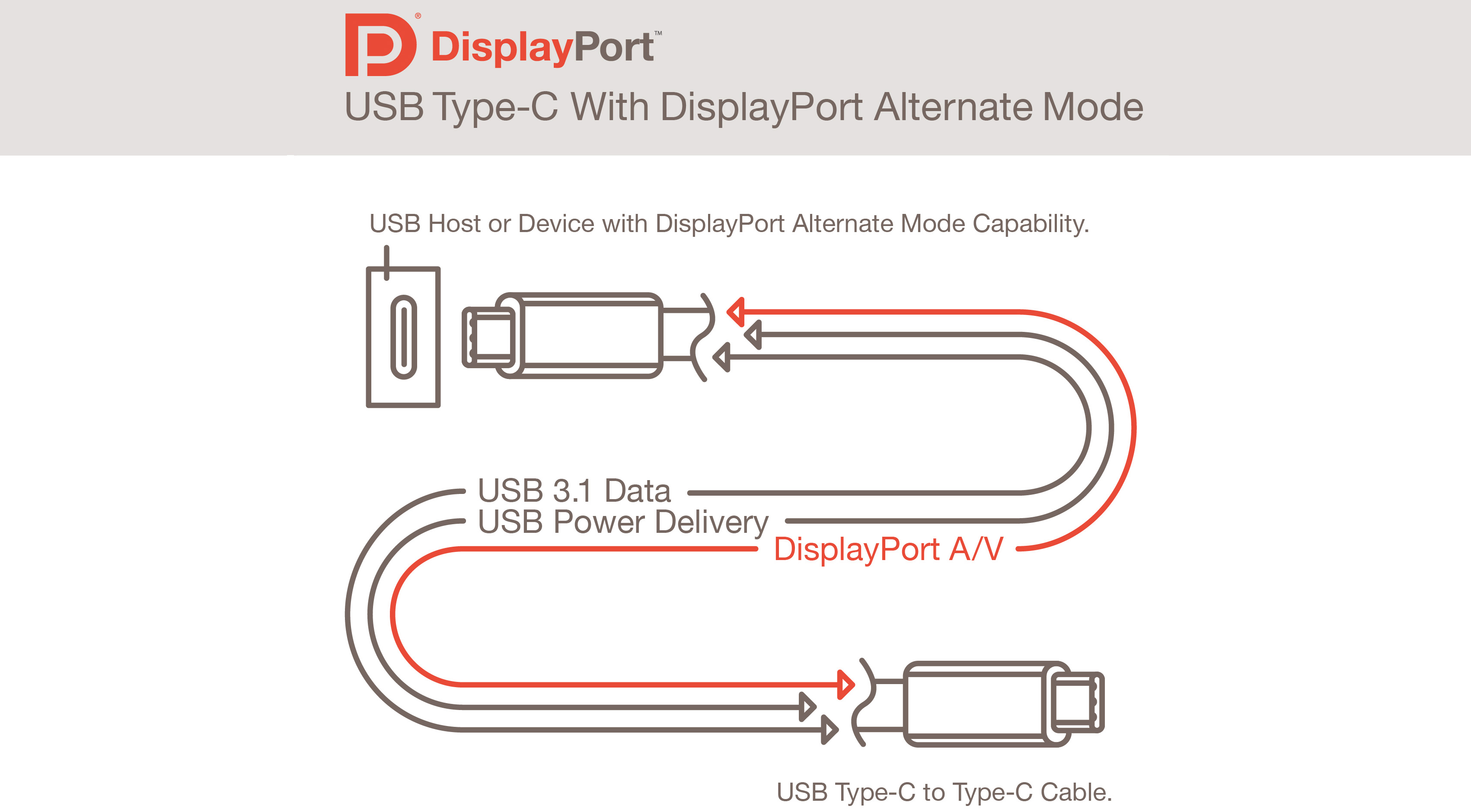Video Electronics Standards Association (VESA) released DisplayPort 2.0. This announcement marks the first meaningful update in 3 years. The last major announcement around DisplayPort was with DisplayPort 1.4 that the standard has received since the DisplayPort 1.4.
DisplayPort 1.4 brought better 8K support (60Hz) and faster 4k refresh rates, But wasn’t a massive updated from DisplayPort 1.3 which had 4K and 5K support at 60Hz and 8K support at 30Hz.
As expected, the new DisplayPort standard makes the pipes fatter, and the data faster.
With DisplayPort 2.0 resolutions greater than 8k is possible with refresh rates of a 16K display reaching 60Hz. This news is significant for the AR/VR industry as pushing the boundaries of HMD resolution and refresh rate is top of mind for development teams.
DisplayPort 2.0 is able to achieve this super high resolutions and refresh rates by having a 3x increase in the data bad with compared to previous generations. DisplayPort 1.4 was able to achieve a Max Payload Bandwith of 25.92 Gbps while the new DisplayPort 2.0 can achieve a massive 77.4Gbps to deliver the higher resolution and higher refresh rate content to displays.
Along with enabling higher resolution and higher framerates, there is a reduced need for compressions of video signal before it reaches the display – what this means is less processing and lower latency. As discussed previously, low latency is among the most important enabling technologies for VR.
Multiple display support coming from DisplayPort 2.0 is a direct benefit to the VR development community, and having a dedicated 4k display for each eye is going to make a dramatic difference for reducing the screen-door effect that current plagues even the best HMDs on the market.
The new DisplayPort standard will be backward compatible with the native DP connector but will be best utilized as an alt-mode for USB Type-C applications that allow for audio, video and high bandwidth data transfer over USB 3.0.
The use of a USB-C connector for both media and data transfer would enable much more immersive and responsive experiences.
DisplayPort 2.0 will have the ability to transmit display data to two AR/VR displays that are running at 120Hz – 30 bits per pixel (bpp) and 4:4:4 HDR with DSC (Display Stream Compression)
The DisplayPort 2.0 standard leverages the Thunderbolt 3 PHY layer – something that was recently gifted by Intel to the USB consortium to allow for broader adoption.
“DP 2.0 offers differentiated end-to-end user experiences, across a multitude of market segments, such as productivity and gaming, as well as wider end-to-end interoperability with various connectivity options,” said Syed Athar Hussain, VESA Board Vice Chairman and Display Domain Senior Fellow, AMD.
“Intel’s contribution of the Thunderbolt™ PHY layer specification to VESA for use in DP 2.0 is a significant milestone making today’s simplest and most versatile port also the highest performing for display,” said Jason Ziller, General Manager, Client Connectivity Division at Intel. “By collaborating with VESA, we’re enabling common building block technologies to come together across a wide range of devices and increasing compatibility to deliver better experiences to consumers.”
This is a massive leap form where we are today – but don’t get too excited because we won’t see any DP 2.0 products on the market until the end of 2020.
The VirtualLink connector, is in line with this new announcement from VESA and should be able to leverage the new DP 2.0 technology. The VirtualLink connector allows you to connect your VR Headset directly to you GPU with a single cable.
VirtualLink is currently based on DP 1.4 so there would need to be a new version release to enable DP 2.0 over the same VirtualLink cable.

Below is a list of the potential Resolution, refresh rate and display configurations that VESA state are possible with the new DP 2.0 standard:
DP 2.0 across the native DP connector or through USB-C as DisplayPort Alt Mode enables a variety of high-performance configurations:
Single display resolutions
One 16K (15360×8460) display @60Hz and 30 bpp 4:4:4 HDR (with DSC)
One 10K (10240×4320) display @60Hz and 24 bpp 4:4:4 (no compression)
Dual display resolutions
Two 8K (7680×4320) displays @120Hz and 30 bpp 4:4:4 HDR (with DSC)
Two 4K (3840×2160) displays @144Hz and 24 bpp 4:4:4 (no compression)
Triple display resolutions
Three 10K (10240×4320) displays @60Hz and 30 bpp 4:4:4 HDR (with DSC)
Three 4K (3840×2160) displays @90Hz and 30 bpp 4:4:4 HDR (no compression)
When using only two lanes on the USB-C connector via DP Alt Mode to allow for simultaneous SuperSpeed USB data and video, DP 2.0 can enable such configurations as:
Three 4K (3840×2160) displays @144Hz and 30 bpp 4:4:4 HDR (with DSC)
Two 4Kx4K (4096×4096) displays (for AR/VR headsets) @120Hz and 30 bpp 4:4:4 HDR (with DSC)
Three QHD (2560×1440) @120Hz and 24 bpp 4:4:4 (no compression)
One 8K (7680×4320) display @30Hz and 30 bpp 4:4:4 HDR (no compression)






























